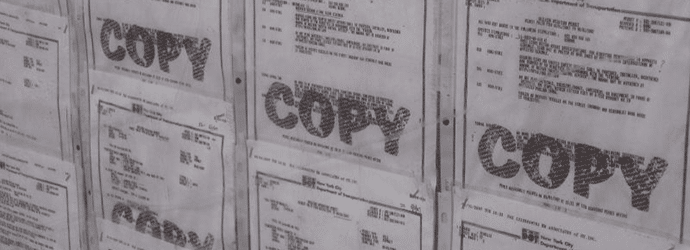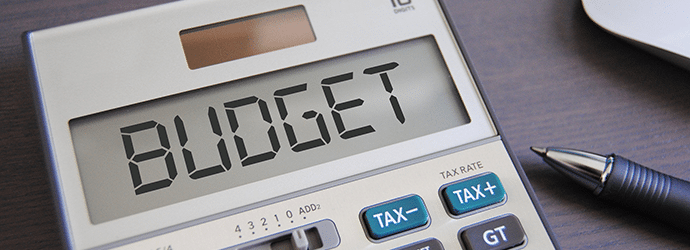If you work at the bench, accurate pipetting is crucial. Without accurate pipetting, your experiments wouldn’t be reproducible, your stock solutions would be inaccurate, and your assays would have such large errors that comparing them would be meaningless. But luckily, there’s no need to worry—your trusty, precision micropipettes take care of that for you.
Or do they?
Precision instruments they may be, but the accuracy of your micropipettes depends on you. You need to maintain your pipettes, have an understanding of how they work, and practice good technique. Only once you’ve mastered those aspects can you claim to have anything like precision instruments at your disposal. Here’s our foolproof guide to accurate pipetting.
Learn How Your Pipette Works
1. You Use an Air Displacement Pipette, Most Likely
An air displacement pipette works a bit like a syringe, except that there is an air-filled cushion between the piston and the sample. The air cushion prevents the piston from coming into contact with the solution. Keeping the solution and the pipette barrel apart is good, but it also puts some limitations on the pipette.
Temperature and pressure affect the volume of the air cushion, which affects pipetting accuracy. Also, volatile solvents can evaporate into the air cushion, which leads to an inaccurate and lower dispensed volume than that displayed on the pipette.
The barrels of air displacement pipettes are also vulnerable to contamination by the pipetted solution. If you’re working with corrosives or bio-hazardous material, this can be a problem.
2. Don’t Use an Air Displacement Pipette (Depending on Your Application!)
Most of the information in this article relates to air displacement pipettes but sometimes a positive displacement pipette may be a better option. Positive displacement pipettes also work like syringes, but they don’t have an air cushion. This makes them more accurate for pipetting volatile solvents because there is no place (air cushion) for the solvent to evaporate.
The lack of air cushion also decreases the chance of contamination when pipetting corrosives and bio-hazardous material, which makes positive displacement pipettes more suitable for working with those reagents. These pipettes are expensive because the barrel and the tip are a unit and both are replaced when pipetting.
A cheaper alternative is to use an air displacement pipette with barrier tips, but these only address some of the problems.
Take Care of Your Pipette
3. Have Your Pipette Serviced Every 6–12 Months
This is a rough guide; you made need to have it serviced more often depending on your requirements for accuracy. The service should include re-calibration, greasing of the moving parts, and replacement of any worn-out seals or other parts. It’s best to have this done by an experienced pipette doctor.
If you work in a university or for a large company, there may be pipette clinics you can use. In other cases, you can send your pipettes off to companies that will do it for you. Also, check out our article on how to assess the accuracy of your pipette.
4. Check Your Pipette for Damage Daily
Examine the nose of the barrel (where the tip is fitted) for any obvious damage. If there is a problem, have it serviced—because it is unlikely to be fit for the job.
5. Clean Your Pipette Each Day Before Use
Wiping your pipette with some 70% ethanol should do it.
6. Store Your Pipette Vertically, Using a Pipette Holder
Storing your pipette this way prevents any liquids that are in the pipette barrel from getting any further inside the pipette and causing corrosion.
7. Never Put Your Pipette on Its Side With Liquid in the Tip
There’s nothing preventing the liquid from rolling down into the pipette barrel (remember only air separates the liquid from the pipette barrel). Any liquid inside the pipette barrel results in contamination at the least and can cause some serious corrosion damage.
8. Use Well-Fitting Tips
Poorly fitting tips allow air to escape when drawing up and dispensing liquid, leading to inaccurate results.
Accurate Pipetting Relies on Good Technique
9. Make Sure You Know How to Pipette Properly
For the basics, take a look at Gilson’s pipetting technique manual. The most important rules to follow are:
- pipette with a slow, smooth action;
- hold the pipette vertically when drawing liquid in;
- immerse the tip only slightly when drawing liquid in—otherwise, you’ll coat the tip with liquid, which will be transferred along with the volume inside the pipette;
- when dispensing the liquid, hold the pipette vertically but keep the sidewall of the receiving vessel at 45 degrees. Pipette against the sidewall or into the liquid that’s already there.
10. Test Your Accuracy
Check the accuracy of your pipetting technique by dispensing 100 µL onto a fine balance. The mass of the droplet you make should be around 0.1 g. Now do the same thing 10 times and record the masses you obtain. If the variation is more than +/–0.5%, then you either need to re-evaluate your pipetting technique or practice more!
Tricks That Increase Accurate Pipetting
11. Pre-Wetting the Pipette Tip
When you dispense liquid from your pipette, a coating of liquid is left on the tip, which makes the dispensed volume slightly less than that displayed on the pipette. Pre-wetting the tip before you pipette will help increase your accuracy.
To pre-wet your tip, draw up the liquid into your pipette and then dispense it back into the original vessel. The coating is on the tip. Now, when you draw up the liquid again and dispense it into the receiving vessel, none of it will be left on the tip and lost to wetting. This is only recommended for volumes greater than 10 µL.
12. Reverse Pipetting
Use this technique when pipetting viscous liquids or volatile solvents. Reverse pipetting also helps when pipetting ultra-micro samples of 0.5 µL or less. Push the piston down to the purge position (the second stop), then draw the liquid up. There is too much liquid in the tip at this point.
However, when the liquid is dispensed by pushing the piston to the aspirate position (the first stop), the extra liquid is left inside the tip.
Using this method, the tip is “automatically” pre-wetted. The extra liquid also helps when pipetting volatile solvents, because some of the solvent will tend to evaporate into the air cushion.
13. Take the Ambient Temperature Into Account
The person or company that calibrated your pipette likely did so at room temperature. If you’re working at a different temperature (e.g. in a cold room), then your pipette will not dispense the displayed volumes.
14. Take the Sample Temperature Into Account
In a 2007 Nature Methods publication, Millet and Barthlen observed a strange phenomenon. When repeatedly pipetting cold samples, the first dispensed volume was always larger than expected, but subsequent pipetting with the same tip gave the correct volume. The same was true for hot samples, except that the first dispensed volume was smaller than expected.
Their solution was simple—for accurate pipetting, dispense the first volume back into the original vessel, then start pipetting.
15. Use a Sensible Pipette for the Volume You Want to Dispense
The accuracy of your pipette decreases as the dispensed volume approaches the minimum the pipette can handle. For example, if you are dispensing 15 µL, then a 1 mL pipette would be terrible, a 200 µL pipette not so good, and 20 µL pipette ideal.
16. Use the Largest Volume Possible
Large volumes are easier to pipette accurately than small ones. Say you are performing an assay where you have to pipette 5 µL. Pipetting that small amount accurately is not easy and will likely contribute greatly to the statistical error in your results.
On the other hand, you could dilute the stock solution 10 times and pipette 50 µL of the solution. You could easily and accurately pipette this amount, which would yield much tighter error bars.
17. And Finally, Here’s How to Get Maximum Accuracy
An analytical balance is more accurate than any pipette. For maximum accuracy, use your pipette to dispense the volume you need but do it into a tared container on a balance. Then, calculate the actual pipetted volume from the mass (using the formula volume=mass/density). Of course, this only works for solutions of known density—but for aqueous solutions that have a density of 1, this isn’t a problem.
Do you have any other top tips for accurate pipetting? Let us know in the comments!
Written by Nick Oswald with Biotix. Originally published in 2008, republished in 2016, reviewed and republished February 2021.






